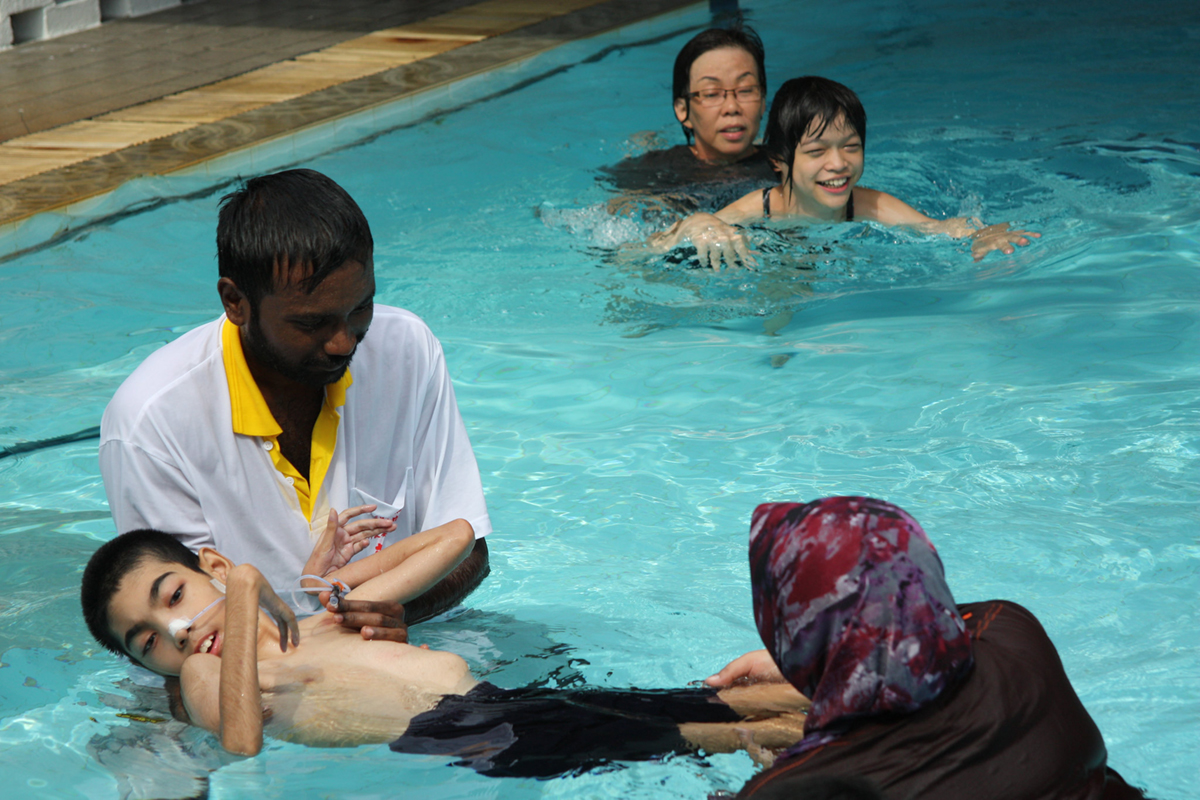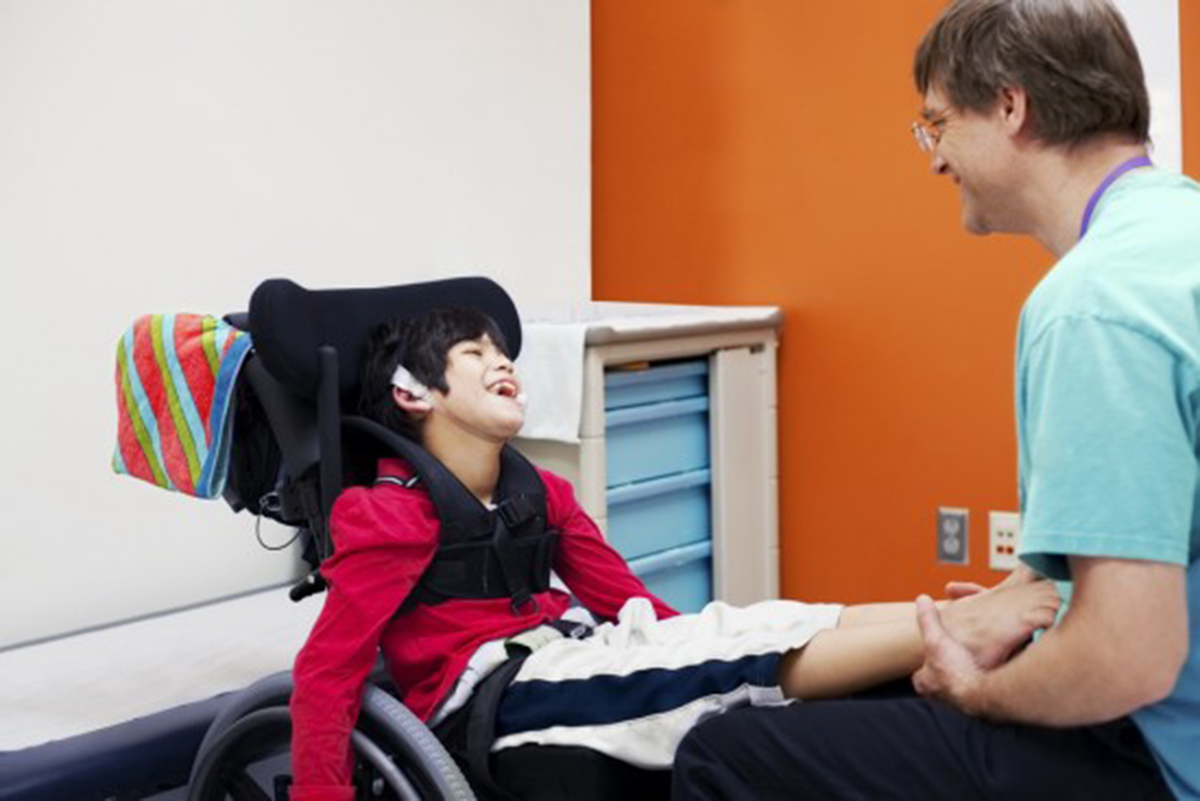Cerebral palsy is not one condition but, in fact, a term that is used to describe a specific group of chronic conditions. These chronic conditions will affect the patient's body movements as well as muscle coordination. Cerebral palsy affects your brain and will occur in children. Children with cerebral palsy will often have trouble doing everyday things, like walking and other precise motions.
These conditions are all caused by the damage to one or more specific areas of the brain, and usually occur during the fetal development, but it can also happen during the first few months after the baby was born. The level of disorder can ranges from milder symptoms to very severe ones that can greatly impact a child's life. Physical symptoms of cerebral palsy are usually weakness and floppiness of the muscles or spasticity and rigidity in most cases, but cerebral palsy can, in some cases, also be accompanied with mental retardation or seizures.
The worst thing about cerebral palsy? This frightening condition has no cure at the moment. This means that depending on what part of the brain is affected, a child might not be able to walk, talk, eat, or play. Does that mean nothing can be done if your child has cerebral palsy? No. While there is no cure, there are several treatment options to help your child manage the symptoms, some of which have been shown to be pretty effect

Symptoms of cerebral palsy
Brain is a large organ and almost any part of it can be affected and thus children may experience a wide variety of signs and symptoms, ranging from mild to severe.
The most common are:
- Ataxia - this condition is characterized with a lack of muscle coordination when performing voluntary movements resulting in uncoordinated movements
- Spasticity, stiff muscles and exaggerated reflexes
- Plegia - Hemiplegia is cerebral palsy that involves one arm and one leg on the same side of the body, while diplegia primary involves both legs. Quadriplegia refers to a pattern involving all four extremities as well as trunk and neck muscles.
- Impaired walk caused by asymmetrical walking gait
- Variations in muscle tone, from too stiff to too floppy
- Excessive drooling or difficulties swallowing, sucking or speaking
- Tremors
- Abnormal sensation and perception
- Impairment of sight, hearing or speech
- Seizures
- Difficulty with precise motions
- Mental retardation - Some children with cerebral palsy have severe mental retardation, but others are extremely bright.
Types of cerebral palsy
There are three major types of cerebral palsy:
Spastic cerebral palsy
Most children with cerebral palsy have spastic cerebral palsy. This form of the condition causes muscles to stiffen, which makes movement difficult. It can affect both legs and that condition is called spastic diplegia. It is important to know that it can also affect one side of the body and in that case it is called spastic hemiplegia. In the most severe cases, all four limbs and the trunk are affected which is referred to spastic quadriplegia.
Athetotic cerebral palsy
About 10 to 20 percent of people with cerebral palsy have this form. It is also called an extra-pyramidal cerebral palsy. It affects the entire body and often causes uncontrolled, slow movements. It affects a kid's ability to control the muscles of the body. This means that the arms or legs that are affected by this condition may flutter and move suddenly.
Ataxic cerebral palsy
This is the least common of the major types of cerebral palsy. It primary affects balance and coordination.
That’s why kids with ataxic cerebral palsy look very unsteady and shaky. They often have very poor balance and may be very unsteady when they walk.
Possible causes of cerebral palsy
The biggest part of the human brain is called cerebrum and it has many functions but the most important is definitely the control of sensation and voluntary motor function. The fact is that cerebral palsy results from an abnormality in or injury to this part of the brain. It is very important to know that, although cerebral palsy affects movement, the problem isn't in muscles themselves but in the affected part of the brain. In some cases, the cause of the condition is well known and doctor can precisely tell whether cerebral palsy is caused by, for example bacterial meningitis, or by some kind of head injury. However, doctors don't understand the cause of most cases of cerebral palsy which is present at birth completely. There are several theories as to what may cause cerebral palsy: some experts claim that it might be caused by the lack of oxygen on birth or some other problems during labor and delivery.

Experts have identified many possible causes of congenital cerebral palsy, including:
- Infection during pregnancy, such as rubella or other viral infections
- Jaundice in newborns. This condition could be caused by infection, severe bruising or problems with red blood cells due to ABO or Rh incompatibility.
- Abnormal brain development before birth, which could be the result of severe genetic causes or metabolic disorders
- Disturbance to brain circulation before birth, caused by an artery spasm or blood clot, similar to a stroke in adults
Diagnosis of cerebral palsy
Although the signs may be present at birth, the diagnosis is sometimes very difficult during the first six months. In fact making a definite diagnosis of cerebral palsy is often hard before the child's first birthday.
Physical examination
Doctor should first just observe child and talk with parents about child's physical and behavioral development. He should also check the reflexes, muscle tone and movements.
Computerized tomography (CT) scan
Images created with a CT scanner show the structure of your child's brain, as well as the presence and extent of any damage. It can also show the presence of hydrocephalus, and other bone malformations.
Magnetic resonance imaging (MRI) scan
The good thing about this diagnostic tool is that it uses no radiation. Instead of it, a computer creates tissue-slice images of the brain from data generated by a powerful magnetic field and radio waves. This can give 3D images of a child’s scull and brain.
Other tests
Some children may need genetic or metabolic tests to help rule out other conditions.
Differential diagnosis of cerebral palsy
It is very important for the doctor to know how to make a difference between cerebral palsy and some other conditions that can resemble it!
Spinal cord dysfunction
This condition may be a result of a spinal cord injury, spina bifida, or a congenital spinal cord malformation. Children with spinal cord dysfunction experience several medical problems which are similar to the ones in the cerebral palsy but they also have some different symptoms at the same time.
Chromosomal anomalies
The fact is that some children with chromosomal anomalies or congenital disorders may appear similar to children with cerebral palsy while others, such as children with Down's syndrome, appear very different from children with cerebral palsy.
Other conditions
All muscle, nerve, and bone disorders should be easily distinguished from cerebral palsy by definition.
Such conditions include:
- muscular dystrophy,
- peripheral neuropathies such as Charcot-Marie- Tooth disease,
- osteogenesis imperfecta.
- progressive neurological disorders such as Rett's syndrome, leukodystrophy, and Tay-Sach's disease
Complications if left untreated
Cerebral palsy can lead to several problems, such as:
- Development of joint deformities or dislocation, if there's considerable spasticity
- Nutrition problems, if there are swallowing or feeding difficulties
- Difficulty with vision, hearing and speech
- Dental problems
- Mental retardation
- Seizures
- Abnormal sensation or perception
- Incontinence
Treatment of cerebral palsy
There are several treatment options for cerebral palsy but parents should know that, given the tremendous uncertainties in the outcome, physicians usually choose to treat newborns and preserve life with the hope that the outcome will be a good one.
Some of the most common treatment options are:
Physical therapy
It is clear that muscle training and exercises may help improve child's strength, balance and mobility and lead to greater independence.
This is after all, a motor impairment. There are several devices that can be used which may improve hand and leg function and prevent contractures such as braces, splints or casts. Most experts recommend that the focus should be on helping child to learn skills for daily living such as self-care skills like feeding and dressing.
Speech therapy
Speech therapists and logopeds may be able to not only help your child speak better, but also to improve the eating skills.
Vision and hearing aids
Since this condition can affect vision and hearing capabilities, a child may need eyeglasses or surgery to correct conditions such as cross-eye or other inability of the eyes.
Medications
Some of the most commonly used medications include simple muscle relaxants which ease muscle stiffness and anticonvulsants which reduce seizures.
Surgery
The most important indication for surgery is when the child has severe contractures in muscles, tendons, nerves or joints. The operation should help place the arms and legs in the correct positions. A careful screening is required before the procedure and it should be performed by an expert team of health professionals. Several professionals can be included in evaluation and operation including pediatric neurosurgeons, orthopedic surgeons, pediatric neurologists, pediatric physiatrists and physical therapists.
Assistive technology
What exactly is Assistive technology? It is a special kind of technology which includes such small tools as rails, grab bars, magnifiers, and grips attached to forks and pens. This should make them easier to grasp. It also includes more expensive, high-tech tools, such as customized wheelchairs, voice communication devices, computer software programs, and positioning equipment.
- www.gait.aidi.udel.edu
- www.mayoclinic.com/health/cerebral-palsy/DS00302
- Photo by shutterstock.com

